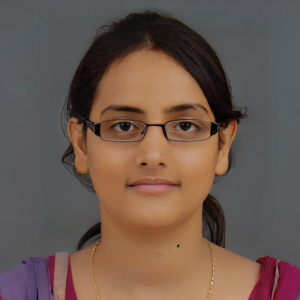Title : Interpolating salinity and water logging status using spatial analysis tools
Abstract:
The purpose of this study to overlay salinity and waterlogged maps of observed data at three soil depths and water table depths and predicted data at root zone and transition zone and water table depth for 10th and 20th year over land use land cover map was performed. The electrical conductivity and water table maps had been individually overlaid on land use land cover maps. IDRISI Selva software was used to perform this task. LULC maps were exported from ERDAS Imagine 9.2 to Arcgis 10.1 where it was reclassified by using spatial analyst tool. Further, reclassified map of LULC along with all salinity and waterlogged maps were exported to IDRISI Selva. In IDRISI Selva, maps were reclassified on the basis of severity levels of salinity and waterlogging. The resultant maps of observed EC at three soil depths (0-30 cm, 30-60 cm and 60-90 cm) had shown more area of barren land, wheat and mustard under non saline class (0-2 dS/m) while EC maps of root zone predicted data of 10th and 20th year included maximum area in low salinity zone (2-4 dS/m). The predicted EC maps of transition zone for 10th and 20th year had shown major part under non saline area. Water table maps had showed maximum area in safe zone (> 3 m). After generating prediction maps of both observed and predicted values for 10th and 20th year of EC and water table depth values quantification of severity levels was carried out in GIS environment. The EC and water table depth maps were individually overlaid on land use land cover maps. The resultant maps of observed EC at three soil depths (0-30 cm, 30-60 cm and 60-90 cm) showed more area of barren land, wheat and mustard under non saline class (0-2 dS/m) while EC maps of root zone predicted data of 10th and 20th year consists maximum area in low salinity zone (2-4 dS/m). The predicted EC maps of transition zone for 10th and 20th year displayed major part under non-saline zone. Water table maps showed maximum area in safe zone (> 3 m).
Keywords: Electrica conductivity and water table maps, LULC maps, ERDAS Imagine 9.2, IDRISI Selva software, Arcgis 10.1.
Audience Take Away Notes:
- Agriculture is a prominent economic sector in several countries and problem of salinity and waterlogging has become major problems in several areas. The methodology is helpful to identify, analyze, deal and prevent further expansion of the problem.
- The problem causes severe crop losses and effect economy benefit in any area. It can even make land out of production. Hence identification of problem and its severity is quite important for all those working in this field. Detecting the problem in large is quite cumbersome and time consuming job. Interpolation can easily and quickly identify problem in large area by collecting data from selected observation points.
- The paper is quite significant for agriculture field experts to analyze salinity and waterlogging status of an area and reclassify severity levels in GIS environment.
- Further for dealing with the problem quantification enables to select suitable treatment for the area. If the area comes under safe zone prevention measures could be recommended to the stake holders. In case of moderate zone change in cropping pattern with proper irrigation management practices could be implemented. While for severe conditions implementation of properly designed sub-surface drainage system could be implemented.
- All above significances and benefits will be helpful for all the representatives who are diligently working in this field (agriculture, engineering, horticulture etc) for betterment and advancement of agriculture sector.



